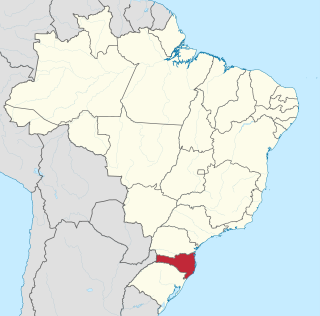
Phyllanthus is the largest genus in the flowering plant family Phyllanthaceae. Estimates of the number of species in this genus vary widely, from 750 to 1200. Phyllanthus has a remarkable diversity of growth forms including annual and perennial herbs, shrubs, climbers, floating aquatics, and pachycaulous succulents. Some have flattened leaflike stems called cladodes. It has a wide variety of floral morphologies and chromosome numbers and has one of the widest range of pollen types of any seed plant genus.

The family Pandaceae consists of three genera that were formerly recognized in the Euphorbiaceae. Those are:

Acalypha is a genus of flowering plants in the family Euphorbiaceae. It is the sole genus of the subtribe Acalyphinae. It is one of the largest euphorb genera, with approximately 450 to 462 species. The genus name Acalypha is from the Ancient Greek ἀκαλύφη (akalúphē) ("nettle"), an alternative form of ἀκαλήφη (akalḗphē), and was inspired by the nettle-like leaves. General common names include copperleaf and three-seeded mercury. Native North American species are generally inconspicuous most of the year until the fall when their stems and foliage turn a distinctive coppery-red.

Clutieae was a tribe of plant of the family Euphorbiaceae. It comprised 2 genera, Clutia and Kleinodendron. Clutia is now included in the family Peraceae, and Kleinodendron is included in the family Phyllanthaceae
Leptopus, the maidenbushes, are a group of plants in the flowering plant family Phyllanthaceae first described as a genus in 1836. As presently constituted, is native to southern Asia from the Caucasus east to China and Maluku.
Leptonema is a genus of flowering plant belonging to the family Phyllanthaceae first described in 1824. The entire genus is endemic to Madagascar.
- Leptonema glabrum(Leandri) Leandri
- Leptonema venosum(Poir.) A.Juss.
Astrocasia is a plant genus of the family Phyllanthaceae first described as a genus in 1905. It is included in the subtribe Astrocasiinae. It is native to Mesoamerica, northern South America, and the western part of the West Indies.
- Astrocasia austinii(Standl.) G.L.Webster - Izabal
- Astrocasia diegoaeJ.Jiménez Ram. & Mart.Gord. - Guerrero
- Astrocasia jacobinensis(Müll.Arg.) G.L.Webster - Bahia, Bolivia
- Astrocasia neurocarpa(Müll.Arg.) I.M.Johnst. ex Standl. - Oaxaca, Querétaro, San Luis Potosí, Tamaulipas
- Astrocasia peltataStandl. - Costa Rica, Nayarit, Jalisco
- Astrocasia tremula (Griseb.) G.L.Webster - Mexico, Central America, West Indies, northern South America

Securinega is a genus of plants in the family Phyllanthaceae, first described as a genus in 1789. As presently conceived, the genus is native to Madagascar and the Mascarene Islands in the Indian Ocean. In the past, it was considered to be much more widespread, thus explaining the long list of species formerly included.
- Securinega antsingyensisLeandri - W Madagascar
- Securinega capuroniiLeandri - W Madagascar
- Securinega durissimaJ.F.Gmel. - Madagascar, Mauritius, Réunion, Rodrigues Island
- Securinega perrieriLeandri - W Madagascar
- Securinega seyrigiiLeandri - W Madagascar
Chonocentrum is a genus of the family Phyllanthaceae described as a genus in 1922. It contains only known species, Chonocentrum cyathophorum, native to the State of Amazonas in northwestern Brazil.
Savia is a genus of the family Phyllanthaceae first described as a genus in 1806. It is native to the West Indies, the Florida Keys, Mexico, Venezuela, Brazil, and Paraguay.
- Savia dictyocarpaMüll.Arg. - Paraguay, S Brazil
- Savia sessiliflora(Sw.) Willd. - Mexico, West Indies, Venezuela
Lingelsheimia is a plant genus variously classified in the families Putranjivaceae or Phyllanthaceae, first described as a genus in 1909. It is native to central Africa and Madagascar.
- Lingelsheimia abbayesii(Leandri) Radcl.-Sm. - Madagascar
- Lingelsheimia ambigua(Leandri) Radcl.-Sm. - Madagascar
- Lingelsheimia fiherenensis(Leandri) Radcl.-Sm. - Madagascar
- Lingelsheimia frutescensPax - Gabon, Zaire
- Lingelsheimia manongarivensis(Leandri) G.L.Webster - Madagascar
- Lingelsheimia sylvestris(Radcl.-Sm.) Radcl.-Sm. - Tanzania
Grady Linder Webster (1927–2005) was a plant systematist and taxonomist. He was the recipient of a number of awards and appointed to fellowships of botanical institutions in the United States of America. Webster's research included study of the diverse family Euphorbiaceae (spurges), on which he produced a large number of papers, and he lectured on plant systematics, biogeography, and the ecology of pollination. Webster's career as a plant systematist was distinguished by the field research he undertook in remote tropical areas.
Poranthereae is a tribe in the flowering plant family Phyllanthaceae. It is one of ten tribes in the family, and one of four tribes in the subfamily Phyllanthoideae. Poranthereae comprises about 111 species, distributed into eight genera. The largest genera and the number of species in each are Actephila (31), Meineckia (30), and Andrachne (22).

Epicephala is a genus of moths in the family Gracillariidae.
Croizatia is a genus of plants in the Phyllanthaceae first described as a genus in 1952. It is native to Panama and to northwestern South America.
- Croizatia brevipetiolata(Secco) Dorr - Colombia, NW Venezuela
- Croizatia cimaloniaCerón & G.L.Webster - Ecuador
- Croizatia naiguatensisSteyerm. - N Colombia, N Venezuela
- Croizatia neotropicaSteyerm. - N Venezuela, Vaupés in E Colombia
- Croizatia panamensisG.L.Webster - Panama, NW Colombia
Bia is a genus of plant of the family Euphorbiaceae first described as a genus in 1841. The entire genus is native to South America.
- Bia alienataDidr. - Brazil, Bolivia, Paraguay, N Argentina
- Bia capivarensisMedeiros & Alves - Serra da Capivara
- Bia fallax(Müll.Arg.) G.L.Webster - Peru, Rondônia
- Bia fendleri(Müll.Arg.) G.L.Webster - Guyana, Venezuela, Amazonas State of Brazil
- Bia lessertianaBaill. - Fr Guiana, Suriname, Guyana, N Brazil
- Bia manueliiV.W. Steinm. & Ram.-Amezcua, 2013, Sierra de Coalcomán, Michoacán, Mexico











